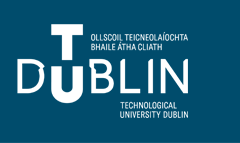Abstract
In 2005, the International Conference on Harmonisation’s (ICH’s) ‘’Q9’’, aimed at providing the biopharmaceutical sector with guidance towards a science and risk-based approach to quality management was published. The concepts outlined in ICH Q9 focused on the fact that evaluation of the risk to quality should be based on scientific knowledge and ultimately link to the protection of the patient.
The purpose of ICH Q9 is to offer a systematic approach to quality risk management (QRM). It serves as a foundation or resource document that is independent of yet supports other ICH Quality documents and complements existing quality practices, requirements, standards, and guidelines within the biopharmaceutical sector and regulatory environment.
It specifically provides guidance on the principles and some of the tools of quality risk management that can enable more effective and consistent risk-based decisions, by both regulators and industry, regarding the quality of drug substances and drug products across the product lifecycle. ICH Q9 is not intended to create any new expectations beyond the current regulatory requirements.
Dr Kelly Waldron, in her thesis titled “Managing risk to the patient: Recoding Quality Risk Management for the Pharmaceutical and Biopharmaceutical Industries,” discussed how thirteen years after ICH Q9, a review of biopharmaceutical sector warning letters through the lens of quality risk management revealed an increasing trend of citations against the QRM programs and practices themselves. Waldron stated that, in the opinion of the GMP inspectors, many applications of QRM had not inspired confidence that the manufacturing firms have appropriately interpreted contemporary guidance and regulations within the context of their individual operations, leading to misapplication and lack of rigor in applying QRM.
Without the critical QRM knowledge required to fulfil their role, those involved in applying the principles of QRM will not understand its benefit and will not be able to sustain it once implemented.
While training is critical to QRM, it only teaches basic concepts in order to execute a task. What is needed is the development of a framework to define and advance individual QRM maturity. Using competency models from other sectors, assessment and certification can be used to address the biopharmaceutical sector’s needs and skill gaps in QRM.
This monograph presents a QRM role-based competency model for the biopharmaceutical sector. Using a modified Delphi research methodology, seven standard QRM roles were identified and were the basis for developing the QRM role-based competency model, which included technical and behavioural competencies associated with each of the seven QRM standard roles.
DOI
https://doi.org/10.21427/vb0x-cd90
Creative Commons License

This work is licensed under a Creative Commons Attribution-NonCommercial-Share Alike 4.0 International License.
Recommended Citation
Haddad, Ghada
(2024)
"Quality Risk Management: A role-based competency model for the biopharmaceutical sector,"
Journal of Applied Pharmaceutical Regulatory Science:
Vol. 1:
Iss.
3, Article 4.
doi:https://doi.org/10.21427/vb0x-cd90
Available at:
https://arrow.tudublin.ie/japrs/vol1/iss3/4


